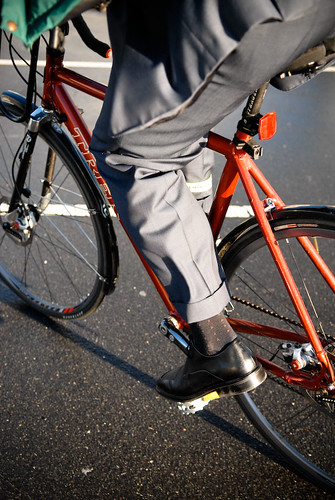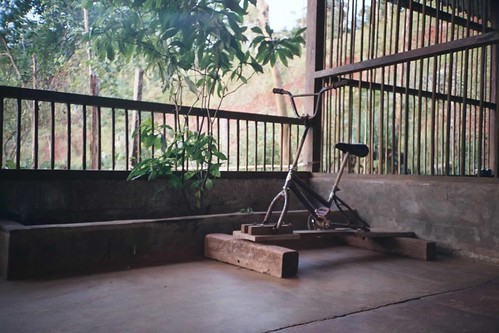 photo: REUTERS - 24/11/2003 (from El Pais) -- Reinhilt Weigel (brandishing an automatic), Asier Huegun Exteberría and members of what turned out to be the first division of the ELN to lay down arms.
photo: REUTERS - 24/11/2003 (from El Pais) -- Reinhilt Weigel (brandishing an automatic), Asier Huegun Exteberría and members of what turned out to be the first division of the ELN to lay down arms.
What if kidnapping were treated more like a disease than a crime? You may remember the case of Reinhilt Weigel, a German national who was kidnapped in 2003 along with a Spaniard, a Brit and four Israelis who were trekking to the Lost City of the Sierra Nevada of Santa Marta. Held for 74 days by Colombia's National Liberation Army (ELN), the European hostages were released, and picked up by a Colombian helicopter escorted by German commandos.
Ve varned you, mein fraulien, said the German Foreign Ministry, who had restricted travel to the area. The ministry promptly slapped Weigel with a 12,640-Euro bill -- for the helicopter ride and other expenses incurred in the aftermath of an "irresponsible adventure."
Weigel's case had taken some bad PR through the publication of the above proof-of-life photo, on the day of release, showing a healthy-looking and apparently convivial Weigel with her captors. Regardless, she refused to pay and took the matter to court, where a Berlin judge declared that only the return airfare to Germany was her responsibility.
Yesterday, that ruling was overturned, and will likely now go on to a higher Federal Administrative Court, as the case will set precedent.
And just what precedent is that? A fascinating one that tiptoes along the line that separates personal and state responsibility.
When I lived in Colombia, it was running joke with some Colombian friends that we wanted to set up an adventure tour for just the kind of high-octane Israeli and European backpackers that the Santa Marta coast attracts. We'd bring them down to the farm, where they'd be kidnapped by a band of actors playing guerrilla, let them pay their ransom for the mere thrill of it before letting them go, revealing the play, and carrying on with the tour. Smiling photo of hostage carrying machine gun included. Truth is these schemes are already in place in Colombia. At Hacienda Napoles, Pablo Escobar's former 7,000-acre ranch (with 11 wild hippos left over from the old zoological days), it's still possible to negotiate a guided tour of a working coke lab in the paramilitary-controlled area. I met a man who regularly took Israelis (and anyone who'd pay the ticket price, no more than any other tour in Colombia) to see the field kitchens and sample uncut merch, as if at a winery.
So, now does your government have a responsibility to bail you out of that kind of adventure, when it inevitably goes wrong? The debate around Weigel, unfortunately, is clouded by perceptions of
her likability. Nevermind any debate about whether the ELN are simply criminals, organized terrorists (as they are currently designated by the government of Colombian President Alvaro Uribe), a guerrilla army or what? The concession is that the ELN won't be paying for that helicopter ride.
I've made the same trek as Weigel -- with the same tour company belonging to the well-reputed Frankie Rey -- three times, and twice with a group of 45 upper class school children. I was in the region again last June to report on
forensic anthropology there. As a reporter, I want to know that if I take risks to tell stories about the world to the people in my country, that in exchange my government will help provide for my safety. More to the point, though, I'm intrigued by the idea of someone being "irresponsible" enough to get themselves kidnapped. The agency is all their own, and the obvious off-shoot is an
insurance package for high-risk behavior. That way, when you go to Colombia and get caught by the FARC, it's actually you who've caught a case of the FARC instead.
In Colombia, where the news was picked up by
El Tiempo, comments quickly turned the lens on their own Ingrid Betancourt, former presidential candidate who on Saturday, Feb. 23 completes
6 years in captivity. Will she pay for the current visit of French foreign minister Bernard Kouchner? How about the public Mass to be held in France -- will that run her more than a wedding? And then the comments turn vitriolic, criticizing "romantic" foreigners for believing guerrilla propaganda, and wondering aloud that after Weigel finishes with her own government, will she sue Colombia for letting the ELN exist in the first place?

























